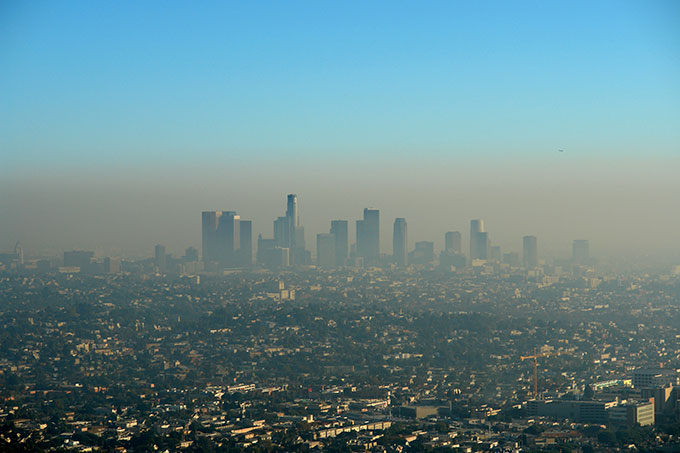Explainer: What are aerosols?
These tiny airborne particles move throughout the atmosphere

The smoke from this lakefront Florida brush fire is blackened by tiny aerosols of soot. Depending on the intensity of wildfires, some smoke aerosols may be injected high into Earth’s atmosphere where they can circulate for days to months.
jmsilva/E+/Getty Images
Say “aerosol,” and many people will think of cans of hair spray or cleansers. The word actually refers to something far more general. Any tiny solid or liquid particle suspended in a gas is an aerosol (AIR-oh-sahl).

Spray paint comes in aerosol cans that release a gas containing tiny, suspended particles of pigment. Lots of tiny particles also are suspended in the gases that make up our atmosphere. When scientists refer to aerosols, they usually are talking about those in our air.
Some of the most common aerosols occur naturally. Forest fires turn trees to soot. Plant pollen and fungal spores are aerosols that can waft long distances. Crashing waves in the ocean create airborne salts. Winds in dry regions blow dust. Volcanic eruptions create ash. And the sneeze from someone infected with the flu or COVID-19 may release virus-laden aerosols that can hang in the air for hours.
Human activities also generate aerosols. These are sometimes called anthropogenic (AN-throh-poh-JEN-ik) aerosols. One example is the burning of fossil fuels, such as coal and oil. Burning wood and charcoal releases aerosols, too. Aerosols also are spewed as people extract metal from rocks, manufacture products, farm the land and use household cleansers and other products that scent the air. Such anthropogenic aerosols now account for about one in every 10 aerosols in the atmosphere.
Nicolas Bellouin is a climate scientist at the University of Reading in England. He studies how aerosols affect Earth’s climate. This is complex because so many things can generate them. Aerosols also come in different sizes and are made of different materials.

“Those differences mean they do not affect climate in the same way,” he explains. Light-colored aerosols, such as sea salt, can reflect light. This sends the sun’s heat back into space, cooling Earth’s surface. The jet-black soot spewed by a wildfire, however, absorbs the sun’s warmth. When aerosols do this at high altitudes, less of the sun’s warming light reaches the planet’s surface. When dark aerosols land on ice and snow, they darken them. This lowers their albedo — how much light they reflect — which can cause melting. Overall, Bellouin notes, “most aerosols cause cooling.”
Chemistry also affects how aerosols affect Earth’s temperature. Some aerosols trap heat close to the planet’s surface, through what is known as the greenhouse effect. But when taken together, aerosols’ cooling effects tend to dominate.
Whether an aerosol falls to the ground, or spends a long time high in the sky, depends partially on its size. Some aerosols are so small that they are invisible. Indeed, some toxic pollutants are so tiny that even when found in unhealthy levels, the sky may look clear blue. Others are as large as the grains of sand at the beach. The smallest particles can stay suspended in the atmosphere for hours to weeks. Bigger, heavier ones can fall to the ground in seconds to minutes.

Aerosols also have different shapes. Volcanic ash particles, for instance, are jagged. Liquid droplets tend to be round. Such shape differences also affect how aerosols behave in the air.
Aerosols even play an important role in the global water cycle. They attract water vapor in the atmosphere. This causes water molecules to condense around that little bit of dust, soot, salt or ash, forming water droplets. Masses of those droplets become clouds.

If there are lots of aerosols in a cloud, that cloud will tend to have many more individual water droplets than normal. What’s more, each droplet will tend to be smaller than in a regular cloud, too. This can make the clouds brighter, causing them to reflect more of the sun’s heat. So, just as the aerosols do themselves, these clouds can cool Earth’s temperature. The number of clouds, and their location in the atmosphere, can then influence rain and snowfall patterns.
Many aerosols that pollute the air also pose risks to human health. “Every year,” says Bellouin at Reading, “millions of people have their lives cut short by several months due to poor air quality. This is often caused by aerosols.” Harmful aerosols include dust, soot from fires and chemicals spewed by industrial plants. However, aerosols also can play a positive role in natural cycles. “For example, dust transported from the Sahara provides nutrients to plants in the Amazon rainforest and in the ocean.”







